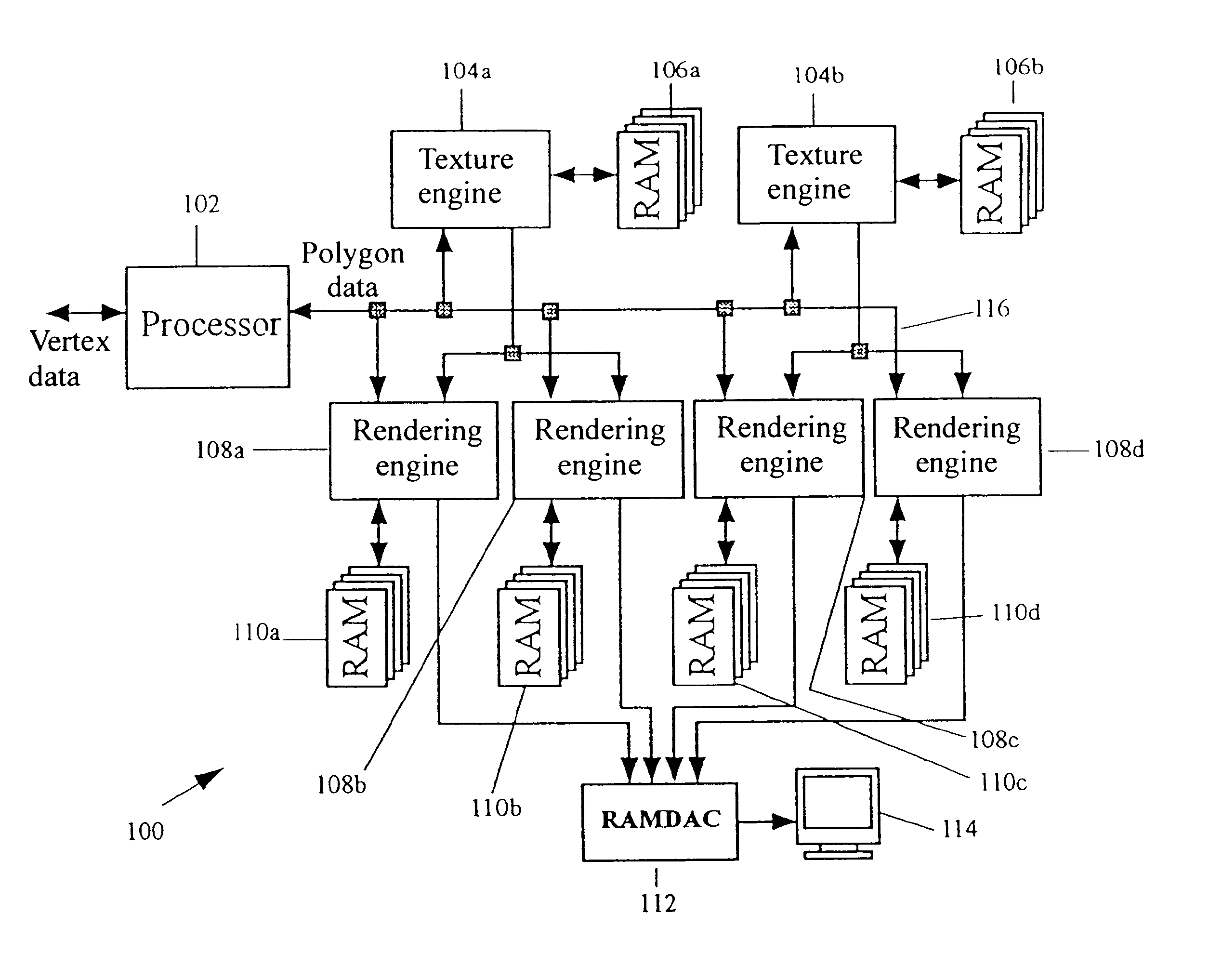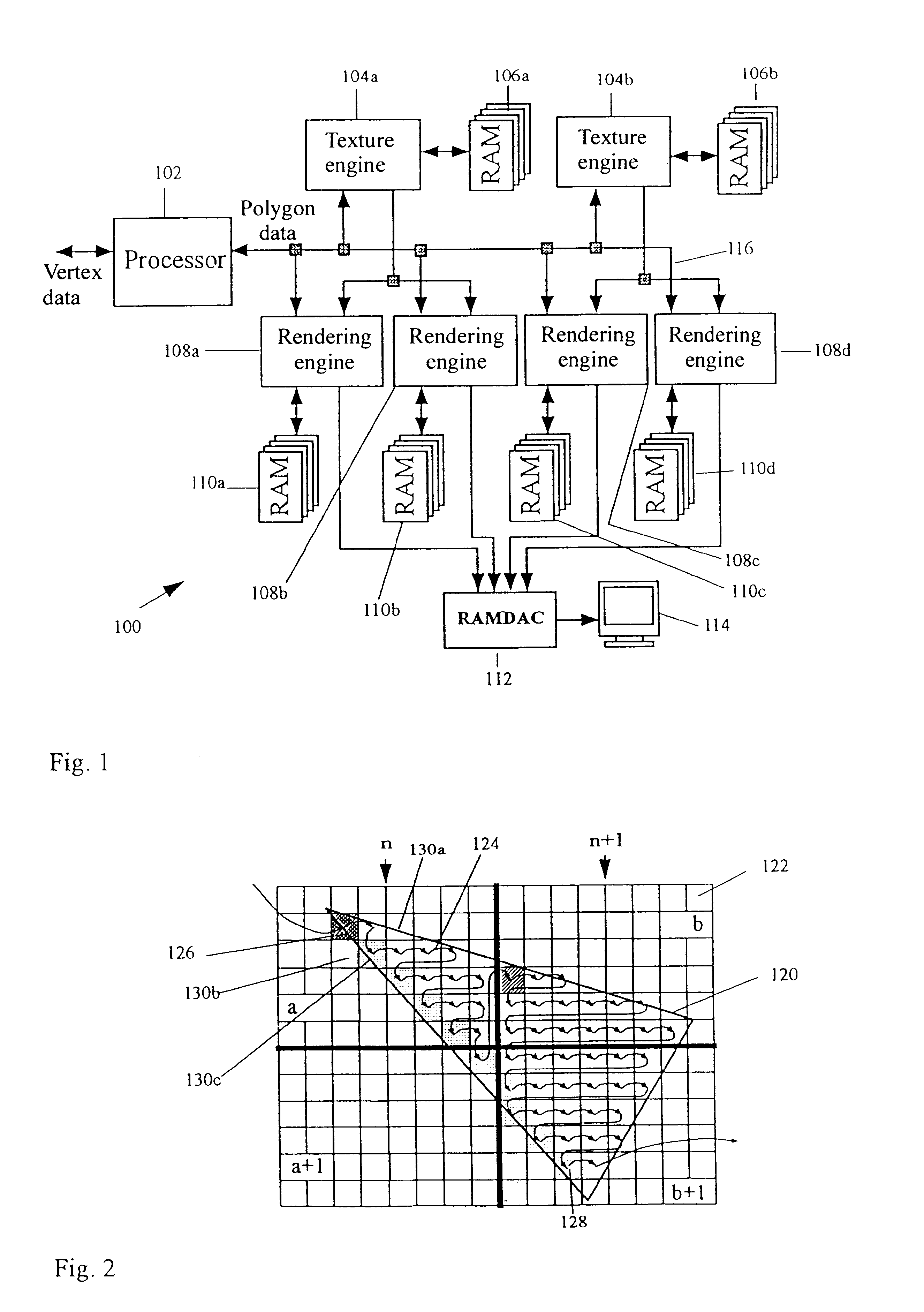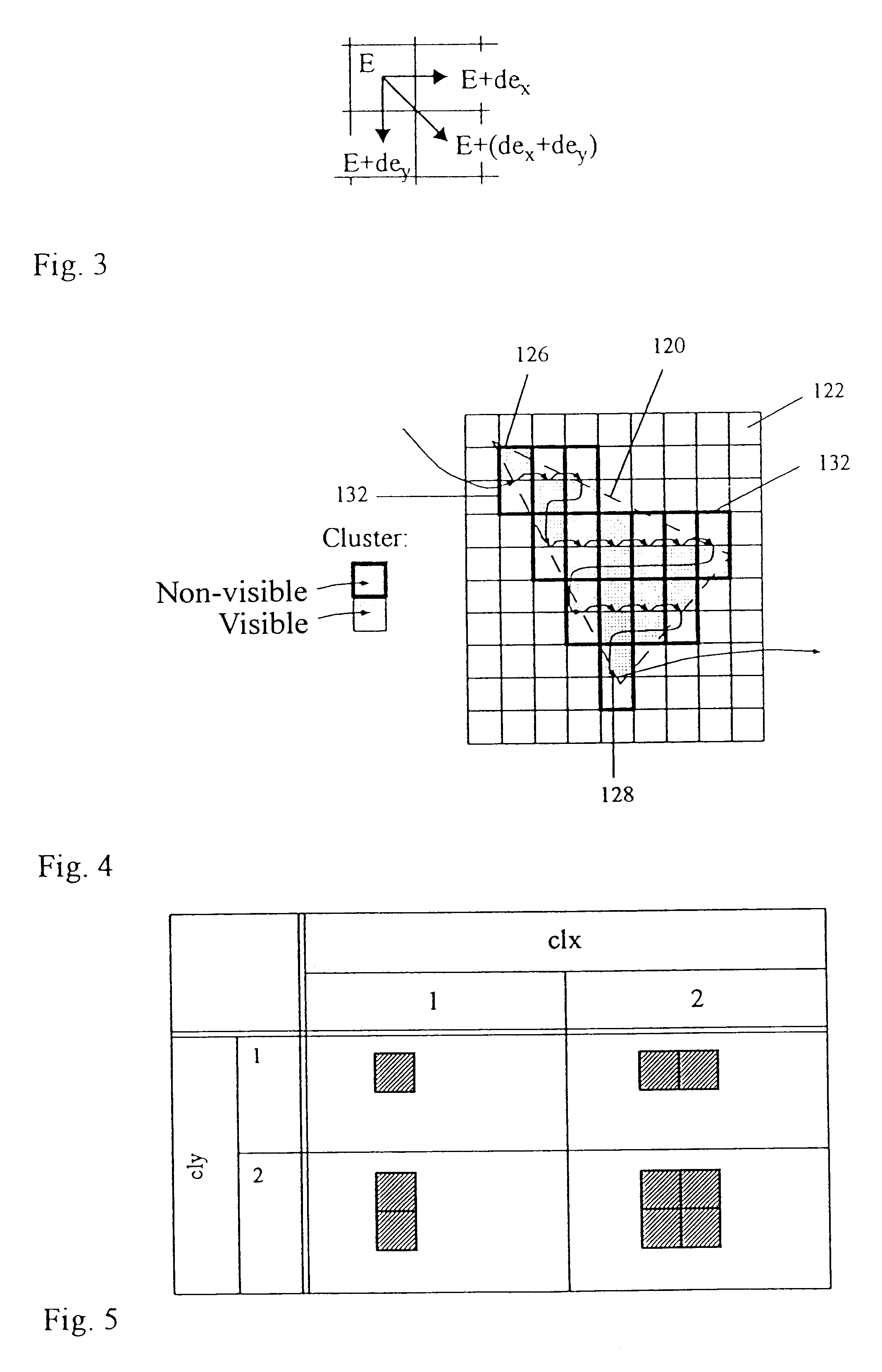Method for rasterizing a graphics basic component
a graphics and basic component technology, applied in the field of rasterizing, can solve the problems of disadvantages of graphics systems known from the prior art for processing three-dimensional images, limited polygons to certain types, and inability to completely random access bandwidth
- Summary
- Abstract
- Description
- Claims
- Application Information
AI Technical Summary
Problems solved by technology
Method used
Image
Examples
Embodiment Construction
represented, graphics system 100 includes texture engines 104a, 104b, which receive the polygon data from processor 102. Each of the texture engines 104a and 104b is associated with a random access memory 106a and 106b.
The graphics system further includes a plurality of image-rendering engines 108a to 108d which are associated with a memory 110a to 110d, respectively. Imagine-rendering engines 108a to 108d receive, at a first input, the polygon data supplied by the processor 102 and, further, at a second input, the data rendered by the texture engines, with two image-rendering engines 108a, 108b and 108c, 108d being associated with a texture engine 104a and 104b, respectively. The image-rendering engines 108a to 108d are connected to a RAMDAC circuit 112 which effects the necessary digital-to-analog conversion of the signals received for display on a screen 114.
The methods described in accordance with the present invention can be implemented in the graphics system 100 illustrated in...
PUM
 Login to View More
Login to View More Abstract
Description
Claims
Application Information
 Login to View More
Login to View More - R&D
- Intellectual Property
- Life Sciences
- Materials
- Tech Scout
- Unparalleled Data Quality
- Higher Quality Content
- 60% Fewer Hallucinations
Browse by: Latest US Patents, China's latest patents, Technical Efficacy Thesaurus, Application Domain, Technology Topic, Popular Technical Reports.
© 2025 PatSnap. All rights reserved.Legal|Privacy policy|Modern Slavery Act Transparency Statement|Sitemap|About US| Contact US: help@patsnap.com



